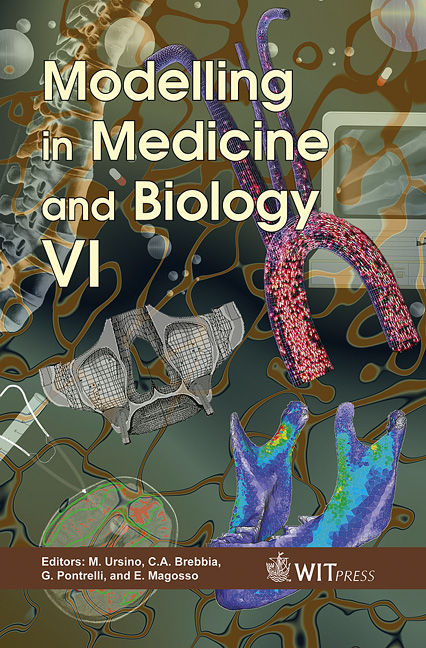A CFD Model Of Hemodynamics In Hemodialysis Vascular Access
Price
Free (open access)
Transaction
Volume
8
Pages
9
Published
2005
Size
755 kb
Paper DOI
10.2495/BIO050331
Copyright
WIT Press
Author(s)
A. Ciandrini, P. G. Walker, M. K. Kolandavel, C. A. Lodi, R. Galato & S. Cavalcanti
Abstract
Hemodialysis treatment requires a patient’s blood circulation to be connected to artificial kidney extracorporeal (EC) circulation through a vascular access. In chronic patients, the vascular access is normally created by an artero-venous (AVF) fistula, where part of the peripheral arterial blood flows along a venous vessel. The connection is made by inserting two needles into the venous vessel. Blood is drawn to the EC along the arterial needle and is returned to the patient along the venous needle. In this study, we simulated the hemodynamics of vascular access with particular focus on the region downstream to the venous needle in order to analyze the influence of return flow (Qb) on blood circulation. A three dimensional CFD model of vascular access circulation was developed and various blood flow conditions were simulated. Simulation results predicted a critical circulation downstream to the needle tip due to the confluence between the return flow and the access flow. A vortex recirculation was evident in this region. Vortex extension appeared only for Qb values higher than 40% of the access flow and was limited to a zone few centimetres from the needle tip in the downstream direction. CFD simulations allowed a detailed study of the complex hemodynamics in the vascular access region surrounding the inserted needle which would otherwise be difficult to measure experimentally. Keywords: CFD model, hemodialysis, vascular access, vortex flow, shear stress.
Keywords
CFD model, hemodialysis, vascular access, vortex flow, shear stress.





